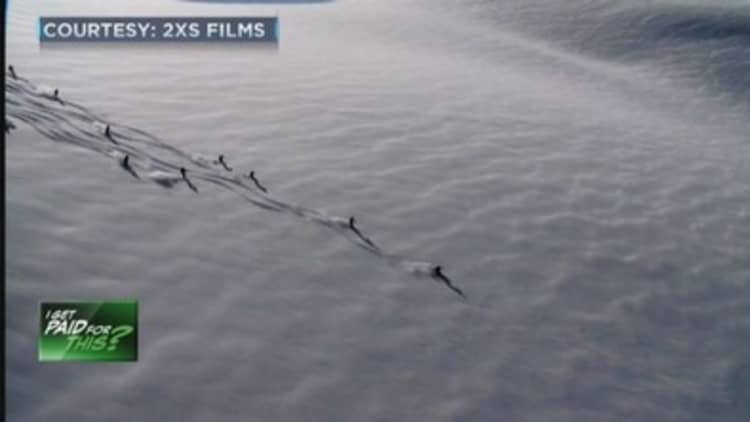
Graham Holt's job makes him feel like he's on top of the world.
For the past 17 years, the heli-ski guide for RK Heliski in British Columbia, Canada has taken thrill seekers where no chairlift can go. The typical run starts on untracked snow at 10,000 feet atop the Purcell Mountains.
"Once everyone is out of the helicopter, the helicopter flies away… that's where I get my first grin of the day, and it's by looking at the people in the heli-huddle and the expressions on their face. You can be a 70-year-old heli-skier and it's like the first time you've been to a candy shop," Holt said in an interview with CNBC's "Power Lunch."
Read More I get paid to be a heli-ski helicopter pilot
The skiers are there to have a good time. Holt is there to keep them safe.
"Avalanches are a concern, making a wrong turn and skiing into a tree, personal injury, and then yeah there's the whole other component of flying in an aircraft multiple landings, multiple takeoffs," Holt said.
Each client is outfitted with a radio, avalanche transceiver, and a backpack containing an avalanche probe and collapsible shovel.
"You're using that probe and shovel in the very unlikely event of an avalanche rescue scenario," Holt added.
Surprisingly, Mother Nature isn't the biggest challenge; it's human nature.
"You're dealing with different nationalities and personalities. Everyone is there for the exact same reason, and that's to have a good time but a challenge would be to blend all of those people together," he said.
While people present the biggest challenge, they also provide the biggest payoff. "I get to be around happy people every single day," a smiling Holt said.


